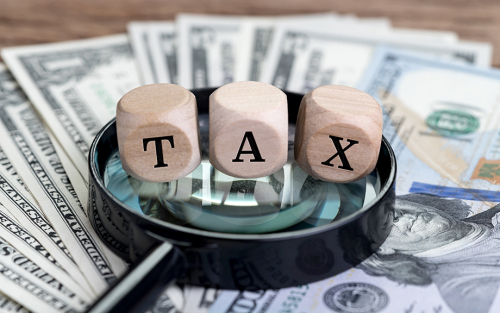Good News, Leverage, and Sudden Stops

One of the major debates in open economy macroeconomics is the extent to which capital inflows are beneficial for growth. In principle, these flows allow countries to increase their consumption and investment spending beyond their income by enabling them to tap into foreign saving. Periods of such borrowing, however, are associated with large trade deficits, external debt accumulation, and, in some cases, overheating when these economies operate beyond their potential output level for an extended period of time. The relevant question in this context is whether the rate at which a country is taking on external debt has useful predictive information about financial crises.
Mixed Impacts of the Federal Tax Reform on Consumer Expectations

The Tax Cuts and Jobs Act of 2017 changed the tax brackets, tax rates, credits and deductions for individuals and similarly altered corporate tax rates, deductions and exclusions. In this post, we examine whether the reform has shifted individuals’ expectations about their financial situation and the macroeconomic outlook. We also ask whether households have already started to adjust their behavior in line with their expectations. In order to answer these questions, we use novel data from a special module of the New York Fed’s Survey of Consumer Expectations (SCE) fielded in February 2018 to a nationally representative sample of heads of households.
Economic Predictions with Big Data: The Illusion of Sparsity

The availability of large data sets, combined with advances in the fields of statistics, machine learning, and econometrics, have generated interest in forecasting models that include many possible predictive variables. Are economic data sufficiently informative to warrant selecting a handful of the most useful predictors from this larger pool of variables? This post documents that they usually are not, based on applications in macroeconomics, microeconomics, and finance.
Just Released: New York Fed Press Briefing Highlights Changes in Home Equity and How It’s Used

Andrew Haughwout, Donghoon Lee, Joelle Scally, and Wilbert van der Klaauw At a press briefing this morning, economists at the New York Fed focused on the evolution of housing wealth and its use as collateral. Their comments came in connection with the Center for Microeconomic Data’s release of its Quarterly Report on Household Debt and […]
Recycling Oil Revenue

Michael Fosco and Thomas Klitgaard Almost half the U.S. merchandise trade deficit was tied to petroleum ten years ago. Oil prices were above $100 a barrel, the economy was doing well enough that oil consumption was growing despite high oil prices, and domestic oil production was falling. The U.S. petroleum trade balance has since narrowed substantially from $400 […]
Forecasts of the Lost Recovery
The years following the Great Recession were challenging for forecasters for a variety of reasons, including an unprecedented policy environment. This post, based on our recently released working paper, documents the real-time forecasting performance of the New York Fed dynamic stochastic general equilibrium (DSGE) model in the wake of the Great Recession. We show that the model’s predictive accuracy was on par with that of private forecasters and proved to be quite a bit better, at least in terms of GDP growth, than that of the median forecasts from the Federal Open Market Committee’s (FOMC) Summary of Economic Projections (SEP).
Have the Biggest U.S. Banks Become Less Complex?

The global financial crisis, and the ensuing Dodd-Frank Act, identified size and complexity as determinants of banks’ systemic importance, increasing the potential risks to financial stability. While it’s known that big banks haven’t shrunk, the question that remains is: have they simplified? In this post, we show that while the largest U.S. bank holding companies (BHCs) have somewhat simplified their organizational structures, they remain very complex. The industries spanned by entities within the BHCs have shifted more than they have declined, and the countries in which some large BHCs have entities still include numerous “secrecy” or tax-haven locations.










 RSS Feed
RSS Feed Follow Liberty Street Economics
Follow Liberty Street Economics